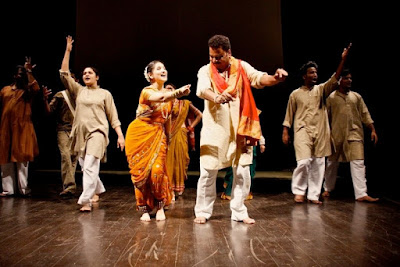An Uncertain future?
For some years now, the
Marathi theatre has seen the evolution of a more sophisticated form of the Tamasha P.L. Deshpande, Vijankatesh
Madhulkar and Vasant Bapat were the first among the “sophisticated” Tamasha writers. Then Tamasha was heavily oriented towards
satirising the post-independence socio-political situation in Maharashtra.
Political leaders were their favourite targets. The traditional Tamasha framework is retained but
without the ribalry. Greater sophistication was brought into these types of Tamasha. This urbanised form could
adversely affect and endanger the traditional form of Tamasha.
| Picture courtesy:google image |
Today, the economic
condition of many traditional Tamasha
artists is precarious and may have not escaped the taint of prostitution. This
is a great pity because Tamasha
artists, despite their lack of education, have natural vocal, mimic or
choreographic talents. Enlightened State support is needed for the preservation
and promotion of this art form.







